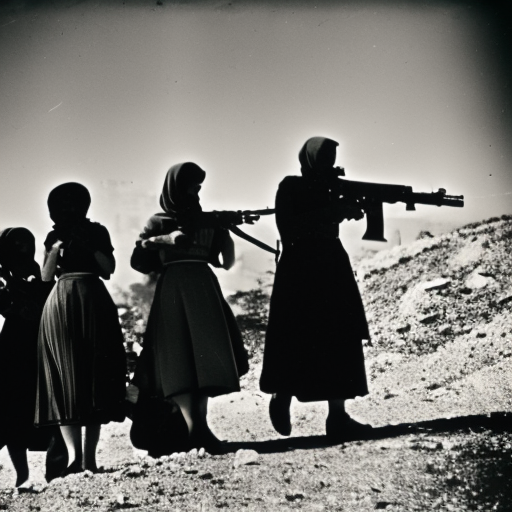Six-Day War: A Brief Overview
The Six-Day War was a conflict that took place between June 5 and June 10, 1967, primarily involving Israel and its neighboring Arab countries, including Egypt, Jordan, and Syria. The war resulted in a decisive victory for Israel, leading to significant territorial gains and reshaping the political landscape of the Middle East.
Background
Tensions had been escalating in the region for years, with several factors contributing to the outbreak of the war. The main issues included territorial disputes, the Arab states’ desire to eliminate Israel, and the closure of the Straits of Tiran by Egypt, cutting off Israel’s access to the Red Sea.
The Conflict
The war began with a preemptive strike by Israel on the morning of June 5, 1967. Israeli forces launched a coordinated attack on Egyptian airfields, destroying a significant portion of the Egyptian Air Force. This initial strike set the tone for the rest of the conflict, as Israel quickly gained air superiority.
Israeli Advances
With control of the skies, Israel swiftly advanced on multiple fronts. In the Sinai Peninsula, Israeli forces pushed deep into Egyptian territory, capturing the entire peninsula within three days. In the north, Israeli troops captured the Golan Heights from Syria, and in the east, they seized control of the West Bank from Jordan.
Jerusalem
One of the most significant outcomes of the Six-Day War was Israel’s capture of East Jerusalem, including the Old City. This allowed Israel to reunify Jerusalem under its control, a move that was met with international controversy and condemnation.
Aftermath
The Six-Day War had far-reaching consequences for the region. Israel’s victory resulted in the occupation of the Sinai Peninsula, the Golan Heights, the West Bank, and the Gaza Strip. The war also led to an influx of Palestinian refugees and increased tensions between Israel and its Arab neighbors.
United Nations Resolution 242
In the aftermath of the war, the United Nations Security Council passed Resolution 242, which called for the withdrawal of Israeli forces from territories occupied during the conflict and the recognition of Israel’s right to exist within secure and recognized borders. However, the implementation of this resolution proved challenging, and the territorial disputes continue to this day.
Long-Term Implications
The Six-Day War had a profound impact on the political dynamics of the Middle East. It solidified Israel’s position as a regional power and led to a significant increase in Israeli settlements in the occupied territories. The war also sparked a sense of Arab nationalism and unity, leading to the formation of organizations like the Palestine Liberation Organization (PLO) and increased support for the Palestinian cause.
Conclusion
The Six-Day War was a brief but consequential conflict that reshaped the political landscape of the Middle East. Israel’s decisive victory resulted in significant territorial gains and ongoing disputes that continue to impact the region today. The war highlighted the deep-rooted tensions between Israel and its Arab neighbors and set the stage for future conflicts and peace negotiations.












